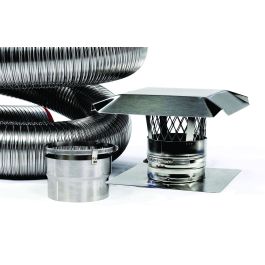I am replacing an old insert that did not have a direct connection to the chimney with a Buck 94nc. My first thought was to install double wall stainless stove pipe up the chimney. There is no clay flue, just straight brick. I have an offset from left to right if you are looking at the stove from the front. My concern now is attaching all the double wall in the masonry chimney and the weight of the pipe on the offset elbows. I am looking for the absolute safest way to vent this stove. That's the whole reason for getting rid of my old insert. I don't want a chimney fire, AGAIN, in this masonry chimney. (Fire was before I bought the house.) I thought this double wall stainless stove pipe would be the safest, but should I consider the flexible liners instead? Besides safety, is one more efficient than the other? Thanks in advance for your suggestions.
How to vent wood burner as in insert in existing masonry chimney?
- Thread starter wcarrico
- Start date
-
Active since 1995, Hearth.com is THE place on the internet for free information and advice about wood stoves, pellet stoves and other energy saving equipment.
We strive to provide opinions, articles, discussions and history related to Hearth Products and in a more general sense, energy issues.
We promote the EFFICIENT, RESPONSIBLE, CLEAN and SAFE use of all fuels, whether renewable or fossil.



